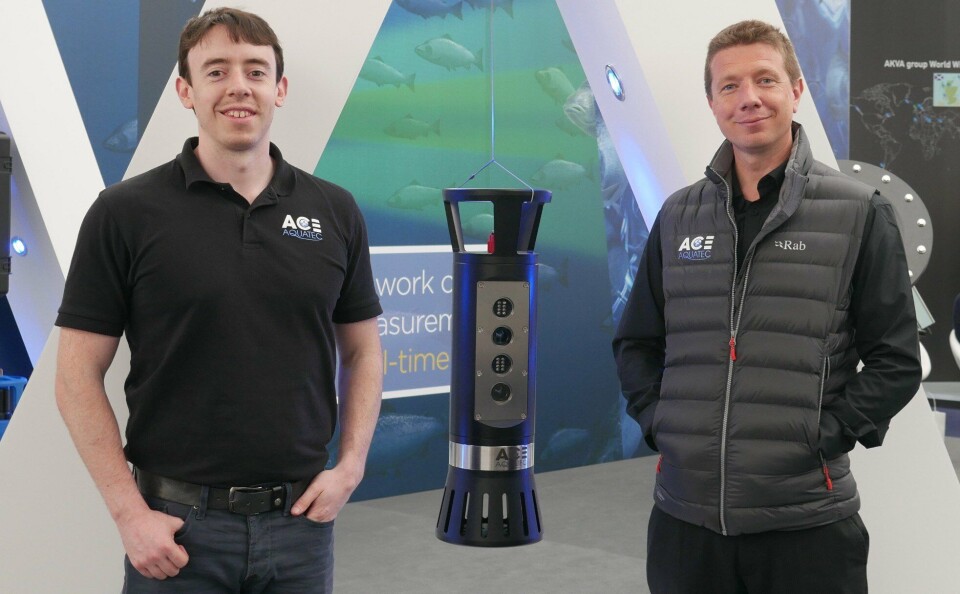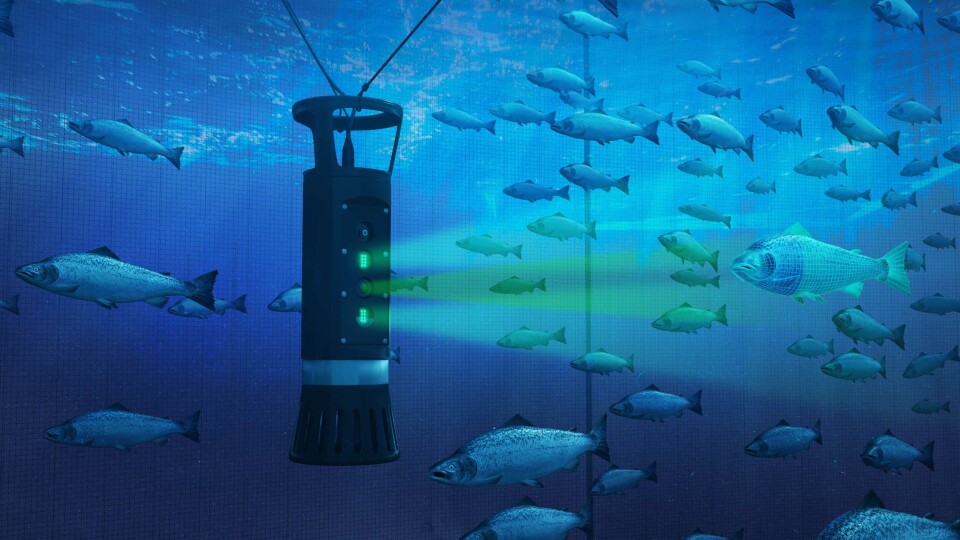
3D cage camera trials snapped up by salmon farmers
Fish farming tech supplier Ace Aquatec has reported sell-out demand for its BioCam 3D biomass measurement system which it promoted at last week’s Aquaculture UK 2018 event in Aviemore.

The BioCam 3D is the world’s first so-called “time-of-flight” 3D underwater camera system, which the Dundee company’s managing director Nathan Pyne-Carter said was more accurate than existing cage cameras.
He said benefits of more accurate biomass measurements included:
- More precise decisions on when to harvest fish
- Prevention of food wastage
- Early indication of disease
“We are putting into production 10 pilot systems which we are offering to Scottish and international firms on a two-month free-trial basis which we will then convert into rental,” said Pyne-Carter.
“Everybody has taken that up.”
Ace Aquatec already supplies a range of products to the fish farming industry, including acoustic seal deterrents and an electric fish stunner that earned the firm the NOK100,000 Innovation Award at AquaNor in Trondheim in August.
And Pyne-Carter is particularly excited by the potential for the company’s latest product, which can easily be adapted for use with fish other than salmon.
He added: “I think it’s going to be monumental. There isn’t a product I have encountered that everybody wants so much. It has such a market lead.”
‘A problem unsolved for years’
Mike Forbes, head of sales and marketing at Ace Aquatec, said: “Accurate biomass measurement is a problem people have been trying to solve for years.
“People always want to know how much their fish weigh but up until now they have not found an effective solution. Everything up until now has been estimates based on calculations. We give them real data in real time.”
The BioCam pulses green-frequency light into the water and measures the depth of whatever it detects in real time.
“It will watch fish as they shoal and watch any fish as it separates from the shoal, so you get very rapid biomass information. It has a range of up to five metres,” said Pyne-Carter.
He said the company was working on a module that would use ultra-violet light to detect lice that would be incorporated into the BioCam.
Farmers will be able to access the BioCam data on-site but also have the option to use Ace Aquatec’s online portal.






















































